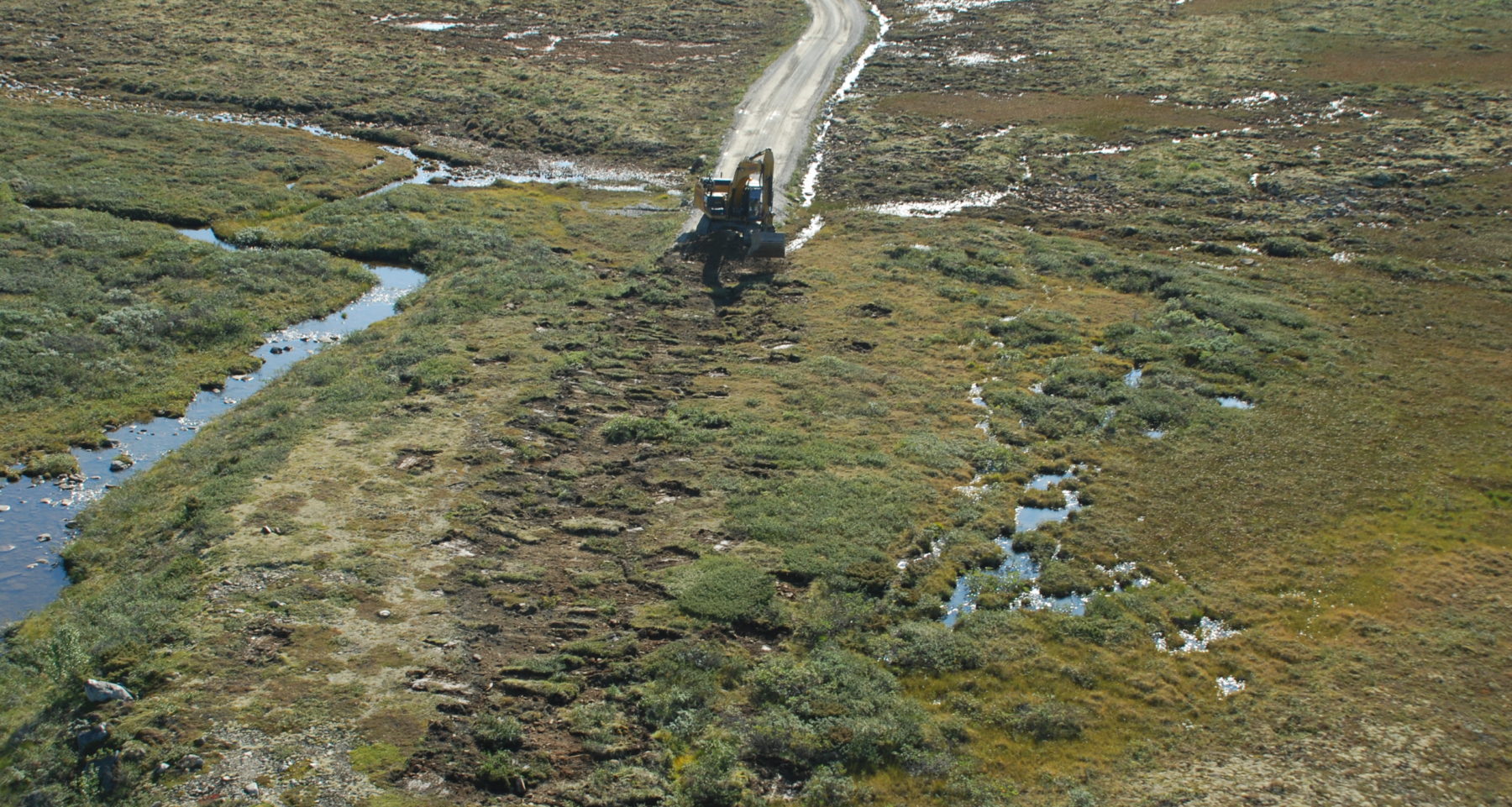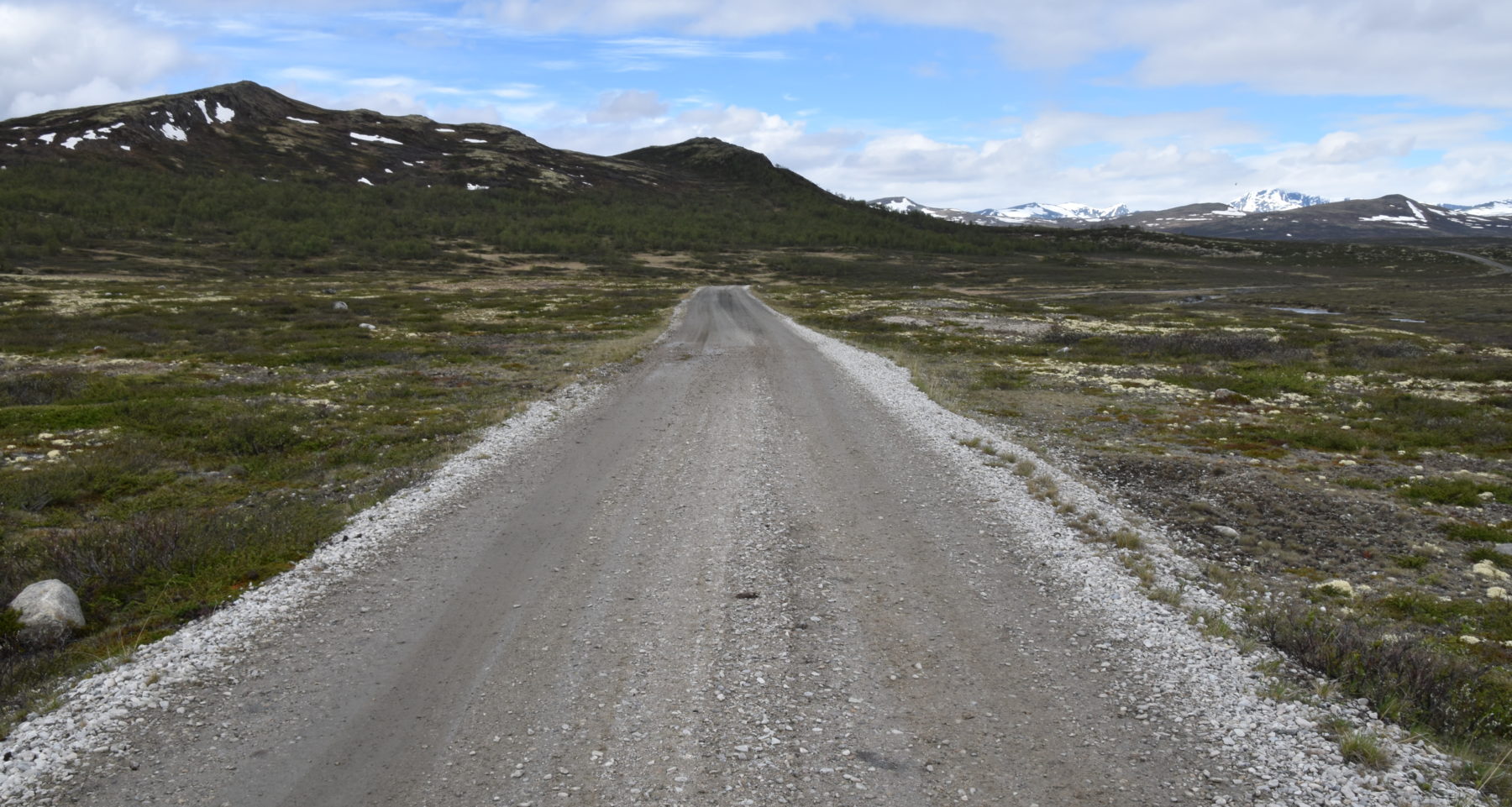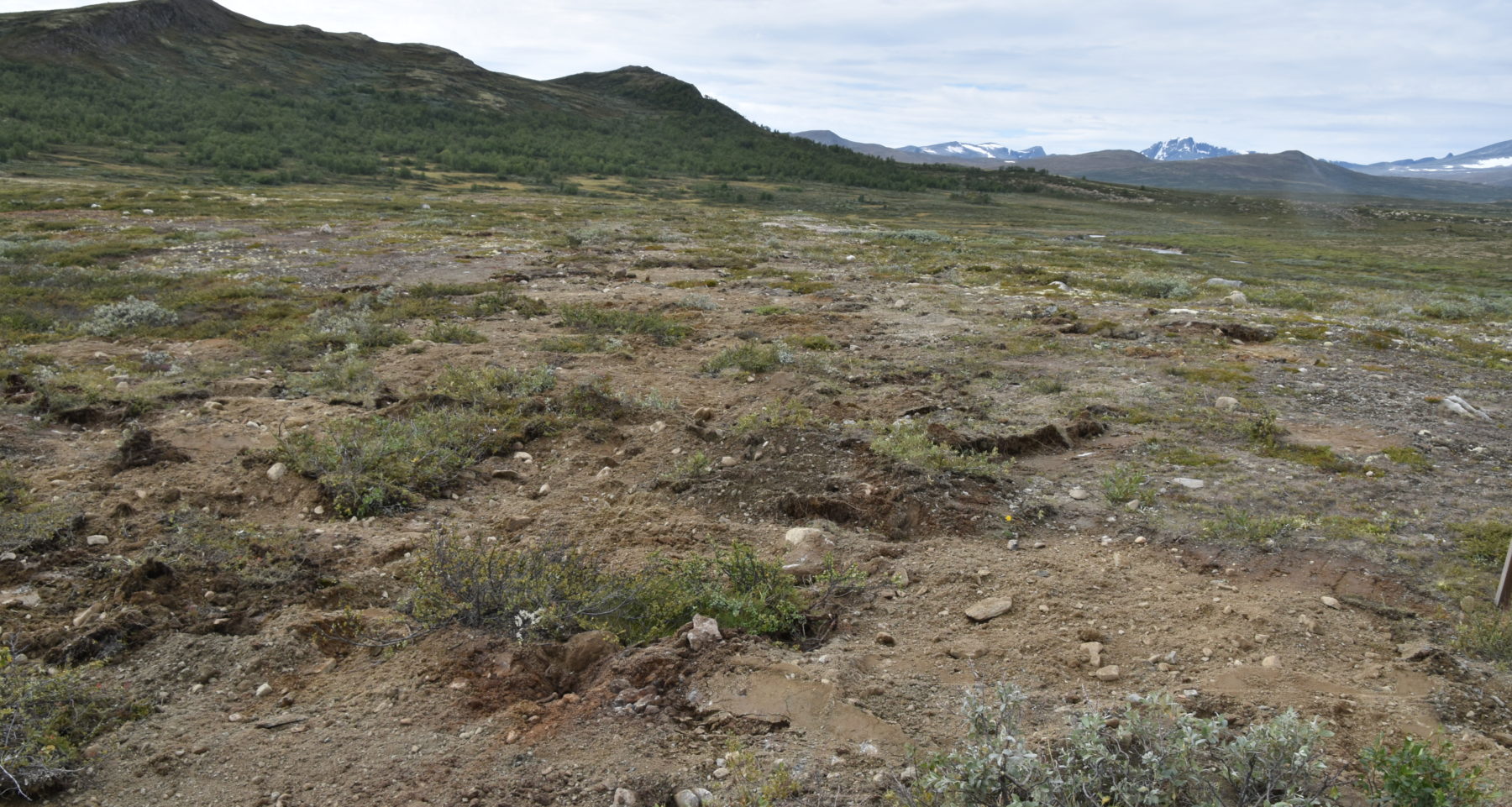Overview
The Hjerkinn military training area at Dovrefjell, Norway, used to be the largest military training facility in southern Norway, 165 km2. Soldiers from Norway and allied countries used the area for training and testing of equipment and ammunition until 2008. In 1999 The Norwegian Parliament decided to closed down the existing military training area and an overall goal of restoring the area. The large scale restoration project started in 2008 and was completed in 2021.
The outcome from the restoration is reported according to the overall goal, and four subgoals:
1. Considerable nature benefit, 2. Nature protection, 3. Civilian use, and 4. Restore back to natural state.
Restoring the Hjerkinn military training area to natural state has set a standard for ecosystem restoration. Development of technical solutions for high alpine restoation, monitoring, adaptive interventions, and systematic involvement and traning acrtoss professions have been developed and reported in scientific journals, media, and popular reports. The project demonstrates the full cycle of a large-scale restoration and illustrates the diversity of measures, solutions and cooperation needed during such an extensive project.
Quick Facts
Project Location:
Hjerkinn, Hjerkinn, Norway, 62.22005, 9.54128, 3, ChIJdelQ8PazFEYR857xPICwCCk, Hjerkinn, Hjerkinn, Innlandet, 2661, Norway, NO
Geographic Region:
Europe
Country or Territory:
Norway
Biome:
Tundra
Ecosystem:
Montane Grasslands & Shrublands
Area being restored:
5200 ha
Project Lead:
Norwegian Defence Estate Agency
Organization Type:
Governmental Body
Project Partners:
Norwegian Defence Estate Agency
Norwegian Institute for Nature Research
The Norwegian Army
Ministry of Defence
Norwegian Environmental Agency
Location
Project Stage:
Completed
Start Date:
2003-01
End Date:
2020-08
Primary Causes of Degradation
OtherDegradation Description
The project area used to be a military training area during 100 years. Major parts of the technical infrastructure were developed during the 1960′ s to 1980′ s, including more than 90 km of roads, ~100 buildings and constructions, several large artillery training facilities, gravel pits and mounds. Major parts of roadless areas were also affected from being used for several types of military training and as target areas.
Defining the Reference Ecosystem
The reference ecosystem is primarily based on contemporary reference sites or existing analogues of the pre-degradation ecosystem.Reference Ecosystem Description
The Dovrefjell area is well-documented as a region of significant natural and cultural value. The military area used to be surrounded by many protected areas: National Parks, Nature Reserves and Landscape Protected Areas. Dovrefjell is a high-mountain ecosystem where the wild reindeer is a key species, and the area also hosts populations of wolverine, arctic foxes,
golden eagles, gyrfalcons and other rare and threatened animal species, a high number of rare and red-listed plant species and a large diversity of vegetation types. Main vegetation types include lichen heaths and shrub heaths, mires as well as alpine meadows and snow beds. Dovrefjell holds the only European population of musk oxen, which was introduced from Greenland in the 1950′ s and remains highly attractive for recreation and tourism.
Project Goals
1. Considerable nature benefit,
2. Nature protection,
3. Civilian use,
4. Restore back to natural state.
Monitoring
Monitoring Details:
The monitoring program include 1. Vegetation monitoring in permanent plots; 2. Systematic expert evaluation of 27 restored sites within the project area (indicators; vegetation recovery, landscape adaptation, water systems).
Start date, including baseline data collection:
2004
End Date:
Not yet decided
Stakeholders
Local and regional authorities (municipalities and Governor)
Tourist companies (e.g. hotels, guiding companies, tourist cabin managers)
Local land-owners and sheep farmers
How this project eliminated existing threats to the ecosystem:
The military activity was closed down between 2003 and 2008
How this project reinstated appropriate physical conditions (e.g. hydrology, substrate)",:
Removing existing military infrastructure and polluted soil
How this project achieved a desirable species composition:
The following guidlines were used to guide the entire project and prepare for ecosystem recovery, including species composition, structural diversity, functionality, and exchange with surrinding landscape: 1. Acknowledge ecological processes, 2. avoid new disturbance during the implementation, 3. no use of introduced species, 4. time scale – consider both short and long term effects, 5. spatial scale (integrate small and large scale perspectives).
How this project reinstated structural diversity (e.g. strata, faunal food webs, spatial habitat diversity):
The following guidlines were used to guide the entire project and prepare for ecosystem recovery, including species composition, structural diversity, functionality, and exchange with surrinding landscape: 1. Acknowledge ecological processes, 2. avoid new disturbance during the implementation, 3. no use of introduced species, 4. time scale – consider both short and long term effects, 5. spatial scale (integrate small and large scale perspectives).
How this project recovered ecosystem functionality (e.g. nutrient cycling, plant-animal interactions, normal stressors):
The following guidlines were used to guide the entire project and prepare for ecosystem recovery, including species composition, structural diversity, functionality, and exchange with surrinding landscape: 1. Acknowledge ecological processes, 2. avoid new disturbance during the implementation, 3. no use of introduced species, 4. time scale – consider both short and long term effects, 5. spatial scale (integrate small and large scale perspectives).
How this project reestablished external exchanges with the surrounding landscape (e.g. migration, gene flow, hydrology):
The following guidlines were used to guide the entire project and prepare for ecosystem recovery, including species composition, structural diversity, functionality, and exchange with surrinding landscape: 1. Acknowledge ecological processes, 2. avoid new disturbance during the implementation, 3. no use of introduced species, 4. time scale – consider both short and long term effects, 5. spatial scale (integrate small and large scale perspectives).
Activities were undertaken to address any socio-economic aspects of the project:
Meetings with stakeholders, information letters to all local inhabitants, guided tours in the area, green training of project owner and contractors by trained ecologists.
Ecological Outcomes Achieved
Eliminate existing threats to the ecosystem:
No military activity after 2008
Reinstate appropriate physical conditions",:
In total 80.5 km of roads were removed, and the restored area amounted to 5.2 km2. More than 120 subterrain tubes were removed to restore natural hydrology systems. Additionally 80 buildings and 8 bridges were demolished and recycled. As roads and technical infrastructure were removed, the interference-free area, located greater than 1 km from heavy infrastructure, more than doubled, from 51 km2 to 114 km2.
More than 15,000 soldiers searched the entire area on foot, more than 19,000 UXOs were found and destroyed, and 550 tons of metal trash were removed.
Achieve a desirable species composition:
The restoration measures have a documented effect on the recovery of native species and vegetation communities.
Reinstate structural diversity:
The restored area of 5.2 km2 consisted mainly of lichen heaths and shrub heath, with some wetlands and mires. The newly restored landscape is capable of storing an estimated 54,500 t carbon, with the additional sequestration of over 1,800 t carbon per year from net primary productivity.
Recover ecosystem functionality:
Road removal also increased available habitat for wild reindeer.
Reestablish external exchanges with the surrounding landscape:
In 2018, major parts (130 km2) of the former military area was protected as National Park and Landscape Protected Area.
Factors limiting recovery of the ecosystem:
The natural recovery is very slow in northern high altitudes, and full recovery of native vegetation types is still going on.
Some technical infrastructure was so devastating to local landscape features, soil and geomorphology, and will never be fully recovered.
Socio-Economic & Community Outcomes Achieved
Economic vitality and local livelihoods:
The restored area is a wilderness area with no permanent settlement. The restored area will support the income for local households within the tourist industry and local farmers, however quantification as household resilience or income has yet to be uncovered.
Regulation of climate, floods, disease, erosion, water quality, etc.:
The newly restored landscape as a climax community, is capable of storing an estimated 54,500 t C, with the additional sequestration of over 1,800 t C yr-1 from net primary productivity. The restoration has contributed to the restoration of sound and wellfunctioning alpine habitats.
Has the project had any negative consequences for surrounding communities or given rise to new socio-economic or political challenges?:
Overall the project was wanted, and the safety in the area and the large wilderness values was highly appreciated. Removing the previous military roads, also used as access roads to the inner mountain areas, raised conflicts during the project. The Parliament decided to reformulate the original goal of removing all infrastructure, and some of the roads in the mountains are kept with stronly regulated access.
Key Lessons Learned
Methods and solutions have been tested, evaluated, researched and adapted, both
scientifically and practically. Many of the restoration measures and experiences have been
reported and published in MSc and PhD theses and scientific papers. Procedures from
Hjerkinn PRO, both “Green training” courses and restoration methods are transferable to
many other types of restoration projects. • Another key lesson from the project was the cooperation/
integration that linked the practical knowledge from activities on the ground, with
scientific knowledge and research. The value of understanding between professions and
communicate on a common platform is great for achieving the desired quality, reaching
deadlines and a sensible financial implementation. • Having ambitious goals is vital, but
defining measurable sub-goals is even more important to verify that the project has the
desired effect upon completion. • Hjerkinn PRO established five restoration principles that
proved very important as guidelines in the on-going work. • Restoration represents
prioritation of land use, and conflicts might rise about extent and forms of restoration. It is
important for a successful outcome that the conflicts are handled in a respectable and
orderly manner. • A measure for good dialogue and progress was a very open
communication with all interest groups, including the media, and by involving both
stakeholders and authorities in important processes. This turned out to be a valuable
experience to be shared across countries, ecosystems and degradation stages.
Long-Term Management
Main parts of the area is protected as National Park with a board. The Norwegian Environmental Agency is the national management authority. Part of the area is grazed by domestic sheep farmers. Wild reindeer is hunted, based on strong regulations. Access to a tourist cabin /hotel is by a dedicated bus during summer season.
Sources and Amounts of Funding
The project is funded by the Norwegian Ministry of Defence, and total cost is 58 mill Euro. Out of this approximately 14 million euro were used for the ecosystem restoration (5.2 km2 restored) and 40 million euro for clearing of explosives. Consequently, the key number for ecosystem restoration costs was 2.7 euro per m2.
Related Research
A large number of scientic papers have been published from this project. The total project have been reported by Hagen et al. 2022 https://doi.org/10.1016/j.jnc.2021.126125Primary Contact
Name:
Dagmar Hagen
Affiliation:
Norwegian Institute for Nature Research
City:
Trondheim




